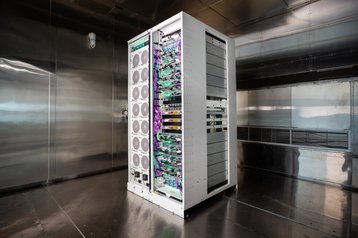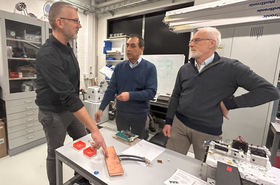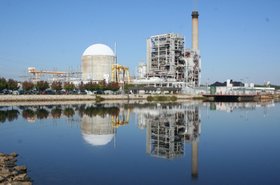Microsoft is adopting direct-to-chip liquid cooling and exploring the potential of microfluidics.
In a recent blog detailing the company’s water use and cooling ambitions, Microsoft outlines some of its latest moves to adopt liquid cooling.
“To harness the increased efficiency cold plates offer, we’re developing a new generation of data center designs optimized for direct-to-chip cooling, which requires reinventing the layout of servers and racks to accommodate new methods of thermal management as well as power management,” the company said.
As well as the new design, Microsoft noted it is using its sidekick liquid cooling system in its existing data centers. The company first showed off the sidekick last year when it announced its Cobalt CPU and Maia AI Accelerator chips.
Maia chips will be deployed in a custom-designed rack and cluster known as Ares, SemiAnalysis reports. The servers are not standard 19” or OCP and are reportedly "much wider." Ares will only be available as a liquid-cooled configuration, requiring some data centers to deploy water-to-air CDUs.
Each server features four Maia accelerators, with eight servers per rack. In the sidekicks, cooling infrastructure is located on the side of the system, circulating liquid to cold plates.
The company also noted it is working on microfluidic cooling technologies. Still a nascent technology, microfluidics brings cooling inside the silicon by integrating tiny fluid channels into chip designs, embedding the liquid cooling inside the chip and bringing the coolant right next to the processors.
Further details about Microsoft's microfluidics research wasn't shared.
“Our newest data center designs are optimized to support AI workloads and consume zero water for cooling,” the company said. “To achieve this, we’re transitioning to chip-level cooling solutions, providing precise temperature cooling only where it’s needed and without requiring evaporation. With these innovations, we can significantly reduce water consumption while supporting higher rack capacity, enabling more compute power per square foot within our data centers.”
Microsoft has a goal of becoming water-positive by 2030. In its 2023 ESG report, the company said it consumed 6.4 million cubic meters of water in 2022, primarily for its cloud data centers. In its 2024 report, that figure had increased to 7.8 million cubic meters for 2023.
In the blog, it also noted that the company has expanded its use of reclaimed and recycled water at sites in Texas, Washington, California, and Singapore. The company is harvesting rainwater in the Netherlands, Ireland, and Sweden – and aims to expand this to new data centers in Canada, the United Kingdom, Finland, Italy, South Africa, and Austria.
“From our first generation of owned data centers in the early 2000s to our current generation in 2023, we have reduced our water intensity (water consumed per kilowatt-hour) by over 80 percent,” the company said.
Microsoft has previously partnered with immersion cooling firm Wiwynn to test two-phase immersion cooling.







